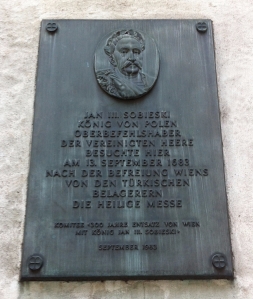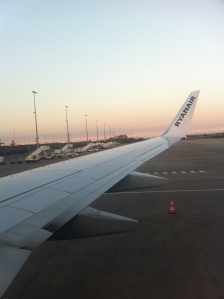I’ve been to Slovenia many times. This time I was especially excited to do so: the small country of about two million people figures prominently in the sequel trilogy I’m currently writing to Keepers of the Stone. However, my intended destination on this trip — the capital of Ljubljana — presented a problem of its own: actually getting there.
Slovenia’s small size and varied geography — some of the same things that make it unique — can cause reserving transport to the country in a timely and cost-effective manner to be challenging. In the past, I’ve endured nine-hour train rides, overnights on the outskirts of Belgrade (coming from Belgium, no less!), or have had to pay prices for intra-Europe plane fares that could rival a trans-oceanic ticket. Coming from Vienna, I ran into similar problems. Even though the two countries border each other, there’s no direct train. Anything resembling a direct bus on the day you need is far from guaranteed. The solution was to reserve a spot in a minivan run by GoOpti — a private firm that’s apparently been quite successful in offering transfers of this type to and from Slovenia.
It was a bit disconcerting simply waiting by the side of the train station, waiting for a minivan to appear. But it did, and we were off. The ride takes about five hours; I settled into the van’s back seat, allowed the scenery to flow by and got to writing (Though, note-to-self, typing in a bouncy minivan is A LOT more difficult than on a bus or train). We crossed the border without even stopping.
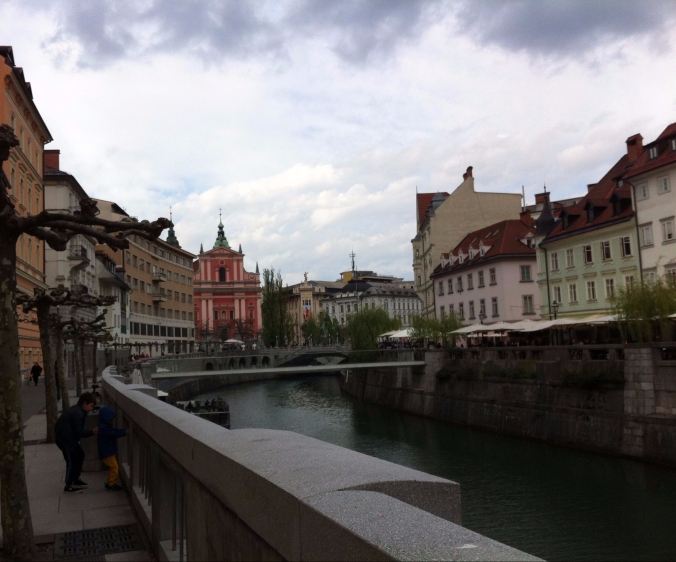
The view from the Ljubljanica towards Prešeren Square
Upon arrival, one of the other two in the van asked in Slovene if I knew the city. I replied that I did, and set out for where I was staying. On my way, I walked through the old town — partly designed by architect Jože Plečnik — and passed the statue of famed Slovene poet, France Prešeren. The monument serves as one of the main meeting points for Ljubljana’s residents in the city center.

Ljubljana Castle dominates the cityscape from almost any angle; as seen from Zvezda Park
I kept going. Only a fifteen minute walk south of the city center lay the much quieter neighborhood of Trnovo. There, my accommodations awaited: an apart-hotel located on Teslova Ulica. If you don’t mind the slight walk these areas offer the advantage of being much quieter and less crowded than the city center, while still being in close proximity.
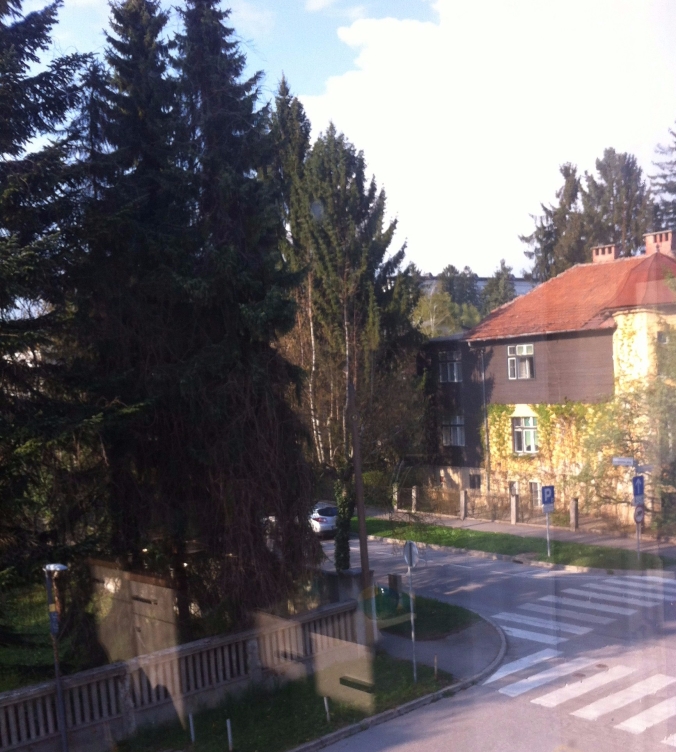
Peaceful Trnovo lays just south of the center (& apartment’s kitchen in the reflection, above!)
Venturing down into Trnovo, or up into the expanses of Yugoslav-era construction, north of the center, offers a bit more of an authentic experience of Ljubljana life, beyond Prešeren square. It was relaxing to spend a morning writing in the neighborhood along the Ljubljanica river. Families strolled or biked along its shores; above, the city’s castle rose on a rocky knoll. Legend has it that the castle hill where is St. George slew the Dragon, or at least that the city is somehow connected with that myth. This bit of lore that can be seen embossed into the city’s seal and architecture.
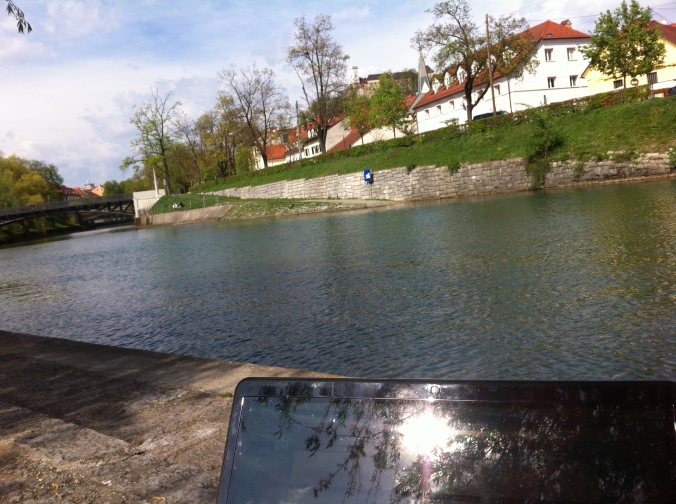
After two days of catching up with friends, I found myself in Pogačar Square at Odprta Kuhna. Meaning ‘Open Kitchen’, this open-air food market opens every Friday afternoon during the summer-ish months. It starts as early in spring as good weather is forecast. At that time, the area in front of the cathedral becomes Ljubljana’s living room.
Every year I’ve come to Slovenia, I’m told that there’s a new fad taking storm throughout the city. This year was no different. This time its apparently craft beer. But, know that if you that if you try one of the two major Slovene brews, you could be judged by your choice. Even though they’re now both owned by the same company, Union is from Ljubljana, while Laško comes from a town with the same name. There’s something of a rivalry (Though very friendly one — Slovenia’s national anthem, “Zdravljica” (Lit. ‘A Toast’), could even be considered a drinking song!)
The next morning, I awoke up early. My trip was coming to an end. I made my way to Ljubljana’s airport, by way of another minivan. Flashing my ID card as I went through security, I boarded my flight back to Belgium. Over the past week, I’d traveled between four separate European countries. At no point did I have to change money, go through customs, stop at a border crossing, show — or even bring — a passport. My mind wondered back to the anxieties, dangers and difficulties that my characters face in Keepers of the Stone whilst questing through the Europe of one hundred and twenty years ago.
We enjoy now what wouldn’t have been believable then. And isn’t that great.
Next Stop: MINSK


